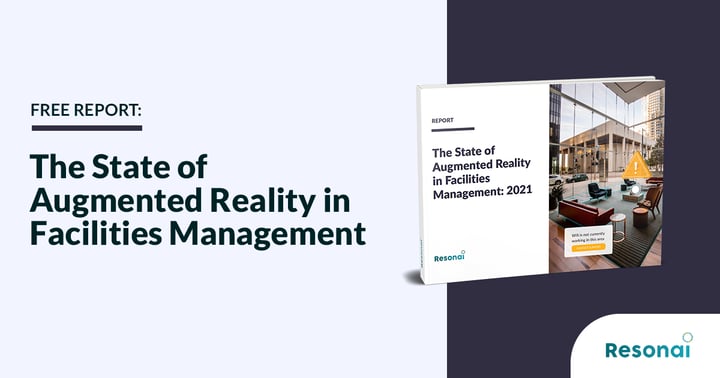
Augmented reality is becoming a crucial component of facilities management, according to our new State of Augmented Reality in Facilities Management report. Whether it’s to manage IoT devices or stay on top of maintenance issues, one in five facility managers are currently leveraging the power of AR, with 73 percent of facilities managers surveyed saying they expect to implement AR solutions at some point in the next two years.
Based on a survey of senior facilities managers, the report examines the ways that properties are using AR to streamline their operations, offer improved tenant experiences, and create new revenue streams. Augmented reality can be incorporated into facility management in a growing number of ways that can be tailored to the specific needs of a location. A healthcare facility would have significantly different needs than an industrial building, but both would be well served by AR integrations.
One of the clearest benefits of using augmented reality, for example, is a more efficient approach to maintenance, an ongoing challenge for every facility manager. Augmented reality systems can optimize repair tickets based on location or urgency, and can also design preventive maintenance schedules to reduce downtime. Nearly half of the managers surveyed have automated their processes with AR, or are using it to avert the need for repairs in the first place.
Though most respondents said they anticipated integrating some version of AR into their workflow in the near future, the COVID pandemic may accelerate that timetable. Facilities of all kinds, but most particularly in the healthcare space, can appreciate the many different ways AR reduces the need for physical interaction. Contactless payments, virtual demonstrations, tutorials, and tours are all currently available augmented reality implementations that can minimize in-person contact. Most can be achieved without the need to add new technology to a facility.
The managers surveyed recognized AR’s ability to offset adoption expenses by reducing other costs or opening up new revenue streams. One immediate boost to productivity would be using augmented reality to manage IoT (Internet of Things) integrations. Seventy-five percent of the facility managers surveyed have some kind of IoT-enabled devices in their buildings, such as environment sensors, HVAC systems, or lights. Optimizing all of those disparate systems from a single interface would be far more cost and time-efficient than handling each one separately.
2021 State of Augmented Reality in Facilities Management is based on a digital survey delivered to a curated audience of senior facility management directors and executives throughout the United States and Europe. Participants represented a cross-section of building types, including corporate offices, manufacturing facilities, retail/apparel, residential, hospitals and medical, shopping centers, education, entertainment, and food and grocery. Data was gathered from November 2020 to January 2021.
Are you ready to learn more? Get in touch with Resonai today and set up a free demonstration.
Download the report to explore the results.
